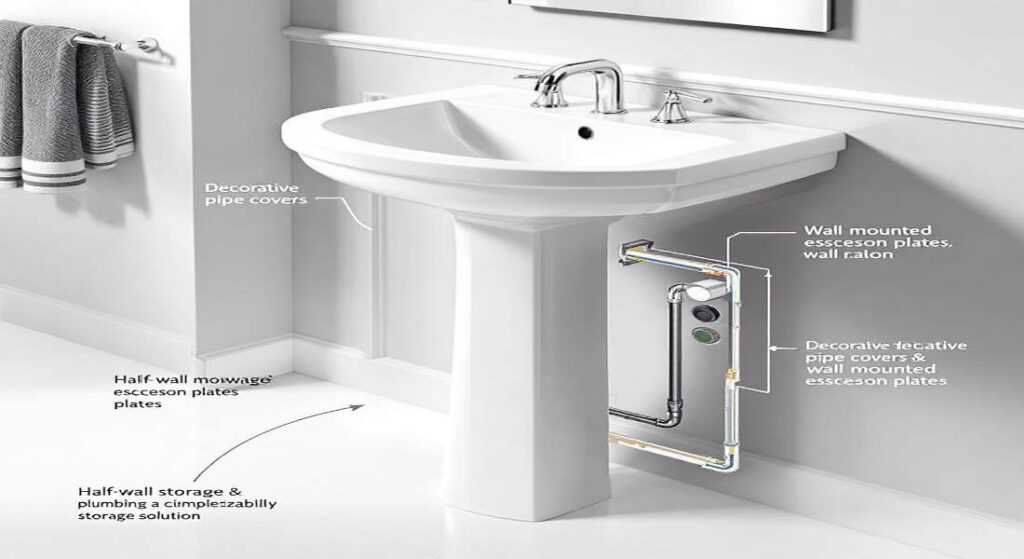Bathrooms are no longer just functional spaces—they’ve become sanctuaries of style and relaxation. However, nothing disrupts the serene aesthetic of a bathroom more than exposed plumbing. Pipes sticking out beneath a pedestal sink can create visual clutter and detract from the minimalist, clean look many homeowners aim to achieve.
If you’ve ever wondered how to hide house plumbing behind a pedestal sink, you’re not alone. With the growing trend of sleek, clutter-free bathroom designs, finding practical and budget-friendly solutions to conceal exposed pipes has become a priority for many.
Understanding the Challenge: Why Hide House Plumbing Behind a Pedestal Sink?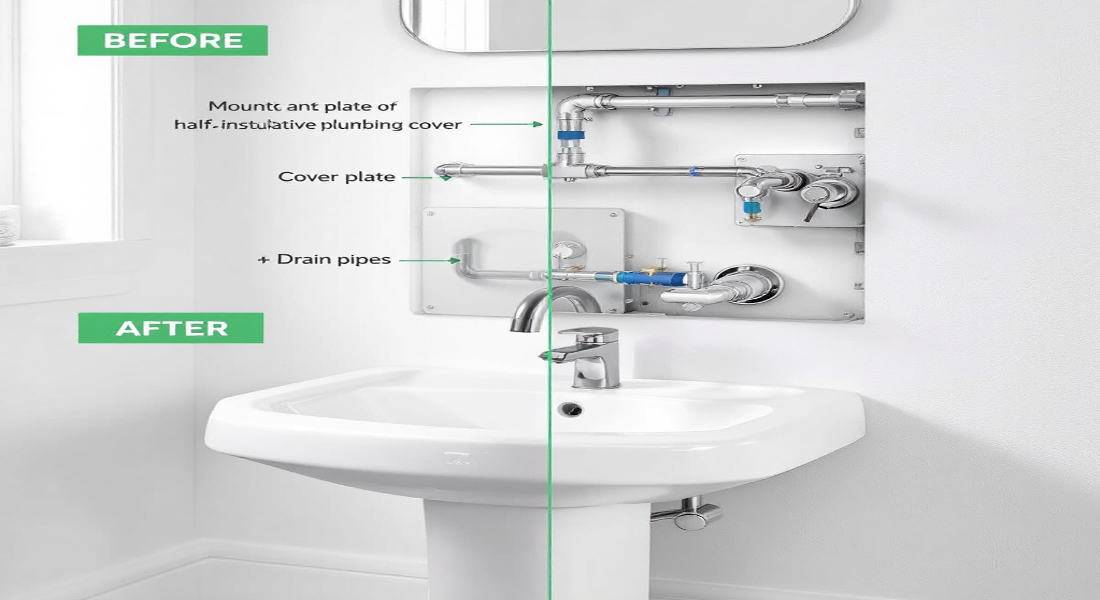
The Problem with Exposed Plumbing
Exposed plumbing, while sometimes considered an industrial design choice, often causes more trouble than it’s worth. Here’s why:
- Visual Clutter: Uncovered pipes beneath a sink can make a bathroom look unfinished or messy, especially in minimalist designs.
- Cleaning Difficulties: Pipes collect dust, grime, and moisture, making them harder to clean compared to smooth surfaces.
- Safety Hazards: Exposed pipes can be hot to touch or become a tripping hazard in certain layouts.
The Unique Challenge of Pedestal Sinks
Pedestal sinks are a classic choice for bathrooms, offering elegance and a small footprint. However, the pedestal’s slim structure often leaves plumbing exposed. While the sink bowl and column provide some coverage, they don’t fully hide the pipes, creating an awkward design challenge.
Benefits of Concealing Plumbing
Taking the time to conceal plumbing beneath your pedestal sink has several advantages:
- Aesthetic Appeal: Hidden pipes create a streamlined, polished look.
- Increased Storage: Solutions like vanities or enclosures can double as storage space.
- Easier Maintenance: Concealment options can simplify cleaning and organization.
Assessing Your Space: What to Consider Before Hiding Plumbing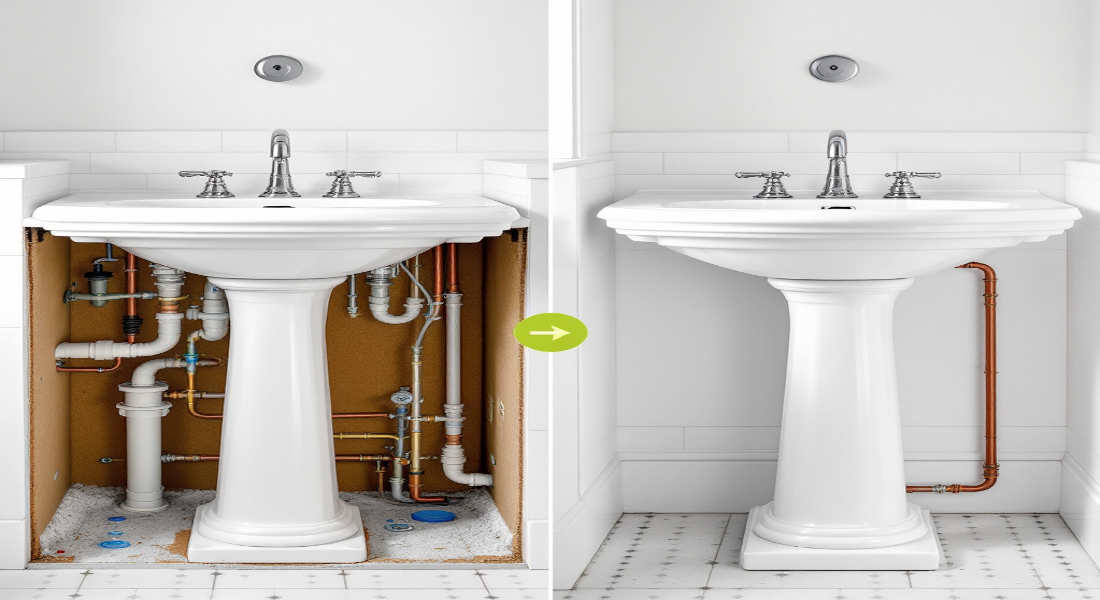
Before diving into the solutions, take a moment to evaluate your bathroom space. This ensures you choose the right method for your needs.
You may also read (home plumbing and why is it-important).
Measure the Area
Start by measuring the space beneath and around your pedestal sink. Note the dimensions of the pipes and the overall sink structure. Accurate measurements will help you select the most suitable concealment solution.
Identify Plumbing Types and Access Needs
Not all plumbing is created equal. Some pipes may need frequent access for maintenance or repairs. If that’s the case, consider solutions that allow for easy access without disassembly.
Match Your Bathroom’s Style
Your concealment method should seamlessly blend with your bathroom’s design. Whether your style is modern, vintage, or rustic, there’s a way to hide plumbing while maintaining cohesive décor.
Installing a Pedestal Sink with Built-In Concealment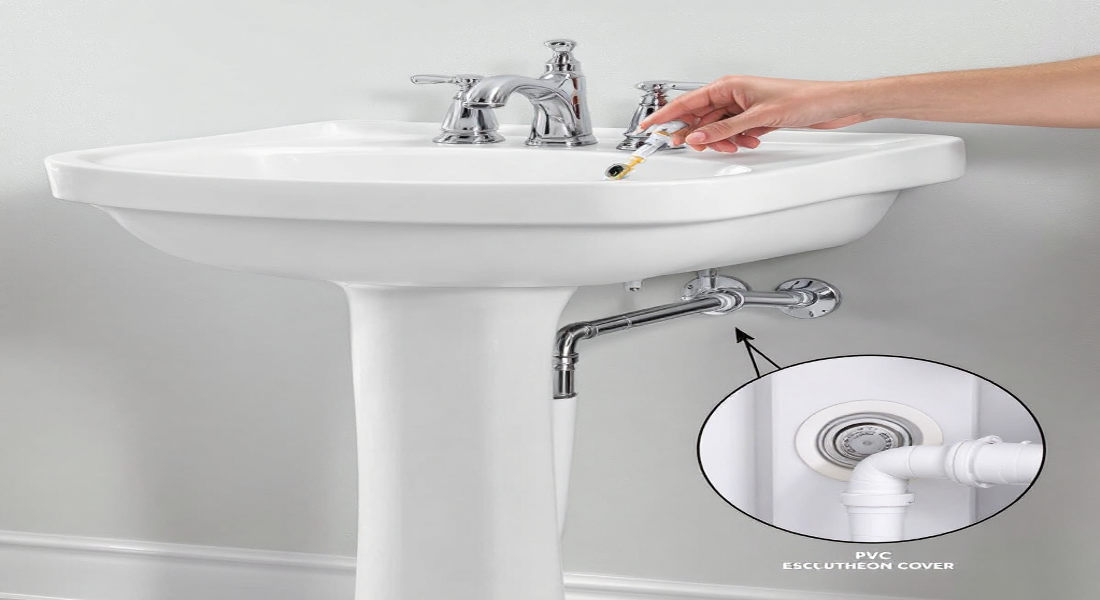
Some pedestal sinks are specifically designed with built-in plumbing concealment. These sinks are stylish and functional, offering complete coverage for unsightly pipes.
Choosing the Right Pedestal Sink
Look for pedestal sinks with a wide column or built-in compartments to hide pipes. Materials like porcelain or ceramic often complement various bathroom styles.
Installation Tips
While these sinks are relatively easy to install, hiring a professional can ensure proper alignment and plumbing connections. This is especially important if you’re replacing an existing sink.
Utilizing Under-Sink Vanity Cabinets
Under-sink vanity cabinets are a fantastic way to hide plumbing while maximizing storage.
Finding the Perfect Fit
Choose a cabinet designed to snugly fit around your pedestal sink. Many options are customizable, allowing cutouts for pipes.
Installation and Customization
- Position the cabinet around the sink.
- Secure the cabinet to the wall for stability.
- Customize with paint or hardware to match your bathroom décor.
Storage Benefits
Vanities provide storage for toiletries, towels, and cleaning supplies, making them both functional and decorative.
Decorative Skirting and Fabric Covers
For a softer, more flexible approach, consider using fabric skirts to hide the plumbing beneath your pedestal sink.
Choosing the Right Fabric
Opt for moisture-resistant materials like polyester or treated cotton. Select colors or patterns that complement your bathroom’s theme.
DIY Installation
- Cut the fabric to fit the circumference of the sink.
- Attach it using adhesive strips or Velcro for easy removal.
- Ensure the fabric is washable for easy maintenance.
Pros and Cons
- Pros: Affordable, easy to install, and customizable.
- Cons: It may require frequent washing and is less durable than rigid options.
Creative Use of Storage Baskets and Decorative Items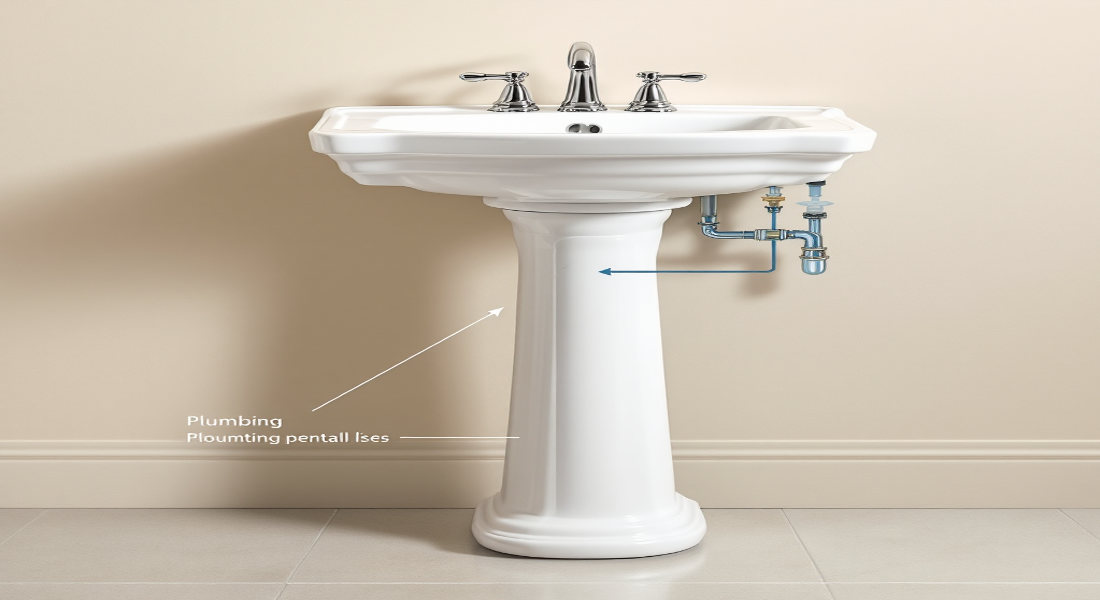
Tall storage baskets, vases, or decorative jars can be strategically placed to obscure plumbing.
Blending Function and Style
Choose items that align with your bathroom’s aesthetic. For example, woven baskets add a rustic touch, while sleek metal containers work well in modern bathrooms.
Practical Tips
- Use baskets to store extra towels or toiletries.
- Arrange decorative items to balance coverage and accessibility.
Building Custom Pipe Boxes or Enclosures
If you’re handy with tools, building a custom box or enclosure is a durable and stylish way to hide plumbing.
Step-by-Step Guide
- Measure and cut plywood, MDF, or plasterboard to size.
- Assemble the box, leaving openings for pipes and access panels.
- Paint or wallpaper the box to match your bathroom walls.
You may also read (understanding bedroom definitions in home listings).
Design Ideas
- Create a half-box to cover pipes while leaving the pedestal visible.
- Incorporate shelving into the design for added functionality.
Installing Wood Panels or Wall-Mounted Covers
Wood panels can provide a warm, natural look while concealing plumbing.
Installation Tips
- Cut panels to fit the area beneath the sink.
- Secure the panels with brackets or adhesive.
- Finish with paint, stain, or decorative molding for a polished look.
Creating a False Wall for Complete Concealment
For a seamless look, consider building a false wall to hide plumbing entirely.
Materials Needed
Moisture-resistant drywall or tile backer board is ideal for bathroom use.
Added Functionality
Incorporate built-in shelves or niches into the false wall for storage and aesthetic appeal.
Painting and Wrapping Pipes for Subtle Concealment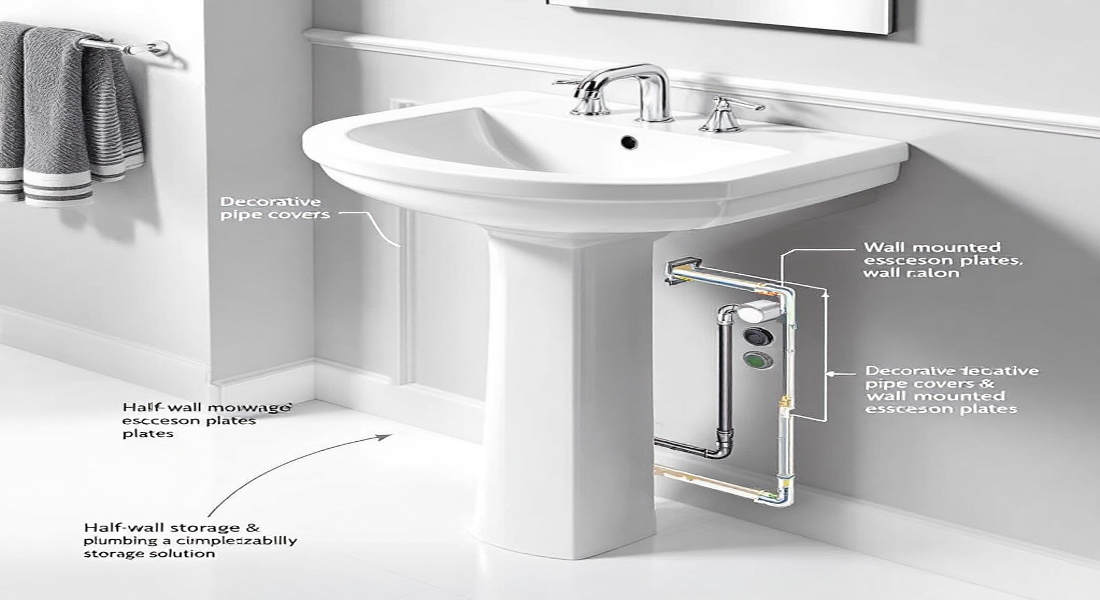
If full concealment isn’t possible, painting or wrapping pipes is a subtle alternative.
Painting Pipes
Choose a paint color that matches your walls or tiles. Apply a primer first for better adhesion.
Wrapping Pipes
Use insulation wraps in neutral tones or decorative patterns to blend pipes with your décor.
Quick Fixes: Folding Screens and Temporary Covers
For renters or those looking for temporary solutions, folding screens or fireplace screens are excellent options.
Benefits
- Instant results with minimal effort.
- Easy to move or replace as needed.
Incorporating Bathroom Furniture and Fixtures
Bathroom furniture, such as custom cabinets or under-sink units, can combine storage with pipe concealment.
Matching Your Bathroom Style
Select furniture that complements your bathroom’s overall design. For example, sleek cabinets work well in modern spaces, while ornate wood pieces suit vintage bathrooms.
Safety and Maintenance Considerations
- Access: Ensure all concealment solutions allow for quick access to pipes.
- Materials: Choose moisture-resistant options to prevent mold or damage.
- Regular Inspections: Periodically check for leaks or wear to avoid hidden plumbing issues.
Budgeting: DIY vs. Professional Installation
Cost Breakdown
- Solution Estimated Cost DIY Difficulty Professional Required?
- Fabric Skirts $10–$30 Easy No
- Under-Sink Vanities $50–$200 Medium Optional
- Custom Pipe Boxes $50–$150 Moderate Optional
- False Walls $200–$500+ Hard Yes
You may also read (how to properly install shower home plumbing fixtures).
